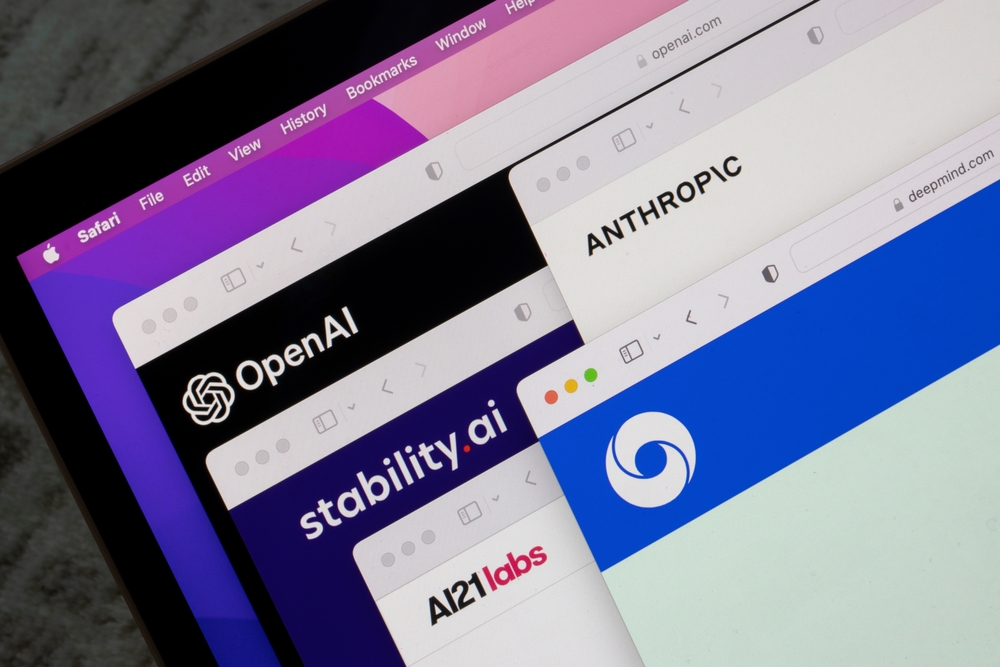
Intel recently informed its employees that it plans on laying off the majority of its marketing department and outsourcing that function to Accenture. One of the reasons it gave was that “it believes Accenture, using artificial intelligence, will do a better job connecting with customers.”
When you hear about decisions like this, you’ll start to understand Intel’s recent stock performance:
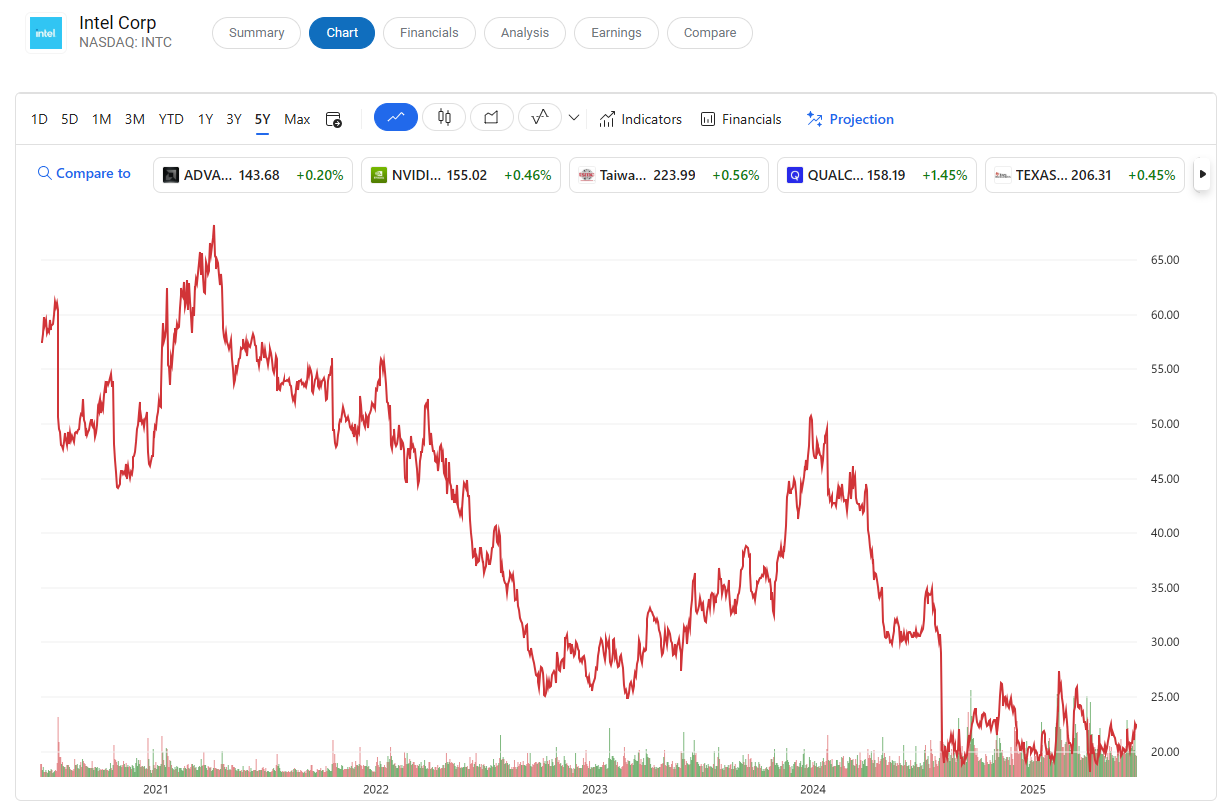
This is a far fall for the company that virtually invented ingredient branding, and has me thinking about what branding will look like in the new era of AI.
Are we headed for an era of homogenized AI-driven marketing, or something entirely different? The answer depends on how you view your organization’s brand.
1. What is a Brand?
Your brand is how you differentiate yourself in the market. Our recent post What Does a Brand Really Stand For? Defining Core Values and Purpose covers this topic in a bit more detail, but to sum up your brand is the tool you use to:
- Define your audience
- Identify their pain point
- Demonstrate how you solve that pain
- Show why you’re different
We assemble these brand components by talking to our market. Prospects, customers, and related stakeholders will all have invaluable input into why they considered your solution, what made them buy, and whether the experience was worth it.
Below are a few familiar examples that have done a good job distilling their essence into a memorable tagline:
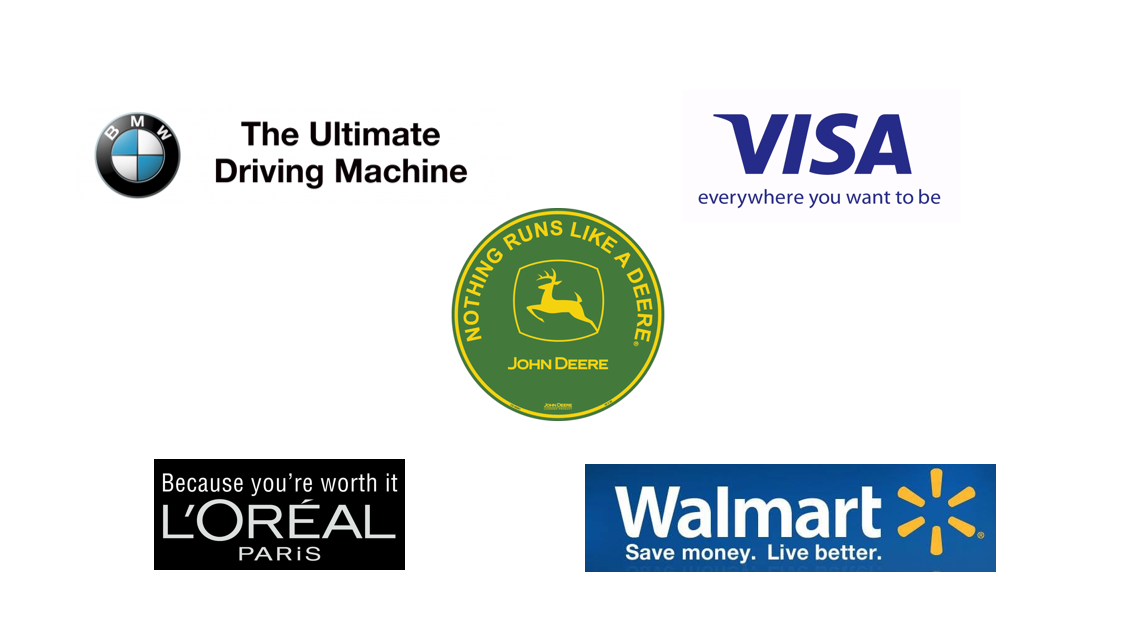
2. What is a Brand’s Purpose?
A brand’s purpose is to generate awareness, familiarity and trust in a marketplace. Properly executed, your branding efforts will eliminate any purchase uncertainty in your customer’s mind and build repeat loyalty over time. Studies have shown that this effect can be so powerful that individuals will make brands part of their own identity.
But when it comes to AI and branding, there’s just one problem:
The AI era puts brands in conflict with this purpose, because people don’t trust AI.
Civic Science research has found that consumers are growing increasingly negative about AI in advertising, with a growing percentage of consumers saying they are less likely to purchase a brand when it uses AI.
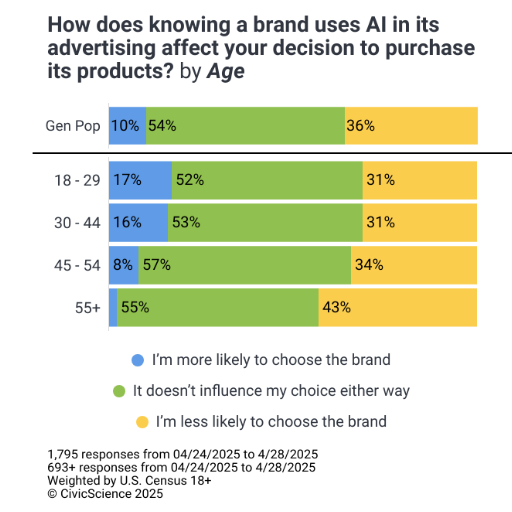
Nielsen IQ research found that consumers consider AI ads “annoying, boring and confusing”. As a result, AI-created ads generated less awareness than traditional advertising.
And finally, the majority of consumers trust human-created content over AI content.
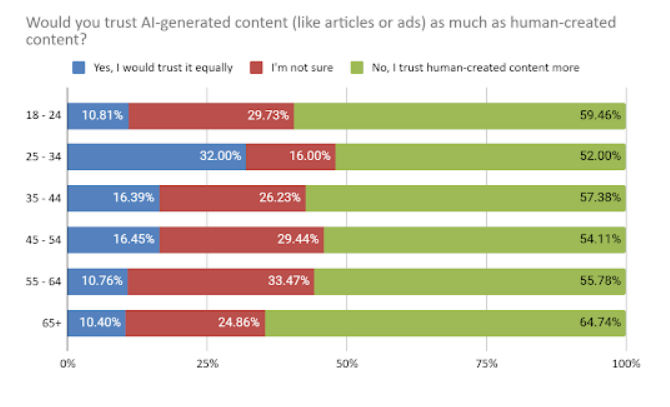
So, is AI helping or hurting your brand? To answer that question, let’s learn how Intel rose to such heights in the first place.
Case Study: Intel Inside
As computers began to take off in the late 1980s and early 1990s, manufacturers scrambled to find microprocessors that could support this new demand. Intel had developed a reputation for quality that allowed it to command a high price, but faced price pressure as new providers flooded the market to try and capitalize on demand while the typical computer end-user lacked understanding of the importance of their processors.
Intel countered with the famous “Intel Inside” campaign, which paid its OEMs to include stickers on their products and share advertising mentioning Intel. The campaign proved so successful that Advertising Age called it the most successful cooperative advertising campaign in history. 70% of Intel’s partners carried the ads or badges, and the company ran ads during the Super Bowl that raised Intel’s brand awareness to stratospheric heights.
What did the campaign demonstrate? That Intel could change market opinion and drive awareness with a well-executed campaign. But also that it understood the market conditions in which it operated and the value proposition of its own brand, which was based on quality.
3. The Decision Factor – Delivering on Your Brand Promise
At some point, your brand promise will come in conflict with its growth.
Brands don’t become successful based on marketing alone. They must live up to the promise they make to their customers in order to maintain their market position. Going back to our Intel example, Intel had already built a reputation for high-quality processors. The Inside campaign succeeded because OEMs were happy to attach themselves to a quality product. If Intel had offered poor quality at a lower cost, would the company really have been able to pursue an ingredient branding strategy?
And this is the key decision every brand will face in the AI era. You will need to decide where your brand’s success requires human labor, even if that labor impacts profits.
As an example, let’s look at customer service with a well-known example: UnitedHealthcare. While the company’s website discusses “bringing more care to more people” and “caring support”, behind the scenes its use of AI to mass-deny claims is a direct conflict with these statements. Anger at this brand conflict drove the murder of the company’s CEO, an action which has cratered the company’s stock and damaged payer rate negotiations.
We are not all in the business of life or death, but we are all facing decisions about where to remove human support and decision-making from our businesses.
To properly make these decisions, you must have a firm grip on what your audience wants from your brand and be able to defend those decisions to your stakeholders. Which means that…
4. Branding is More Important Than Ever
Intel’s decision raises a question, how do you differentiate when you outsource the very function of differentiation? Will the company return to a focus on higher quality? How will it know what needs its OEM market wants without marketers talking to customers?
And its choice of Accenture to create an AI heavy marketing approach begs another question. We can tune any AI model to parse customer feedback more quickly than ever. We can generate copy and creative at lightning speed. But can we truly stand out and differentiate when we use the same tools in the same ways as every other competitor?
To avoid collapsing into a pool of sameness and uniformity, here are my recommendations:
Understand AI Data Limitations in Brand Development
AI can only operate with the data you provide. If you have thousands of survey responses, phone calls and web chats from your own offerings, you’ll be able to assemble a fairly robust, trustworthy dataset of customer needs that can help you refine your brand (although you still need to guard for hallucinations and mischaracterizations). But if you’re developing a new brand or product, AI will only be able to return data that already exists. This won’t help you stand out in your market.
Make Brand Decisions with Data and Human Insight
Branding decisions are conscious choices. Elevator pitches, taglines, logos, and other brand components represent educated guesses and hypotheses about which messages will best resonate with an audience. AI can give you copy options, but can’t make decisions for you. In fact, you may want to go against AI prevailing wisdom when seeking to stand out.
For example, we’ve worked software clients that have a “playbook” for exactly how they’ll scale. These playbooks treat the software as a commodity and the customers as almost an afterthought to be served with as little effort as possible. And when it comes to pricing, models that maximize revenue at acceptable levels of customer churn replace anything that might have been accurately tied to the business’s costs.
In the short term, will this model maximize revenue? Absolutely. But in the long term, it is devastating for any brand that built itself on quality or customer service. Switching costs are very low in the software industry, and more than anything customers want to know that they’re getting a fair price with good support if they need it. Scaling models often provide just the opposite.
Standing Out Often Requires Going Against the Data
AI at this stage is tactical, not strategic. It is a tool to gather information, not a tool to make brand decisions. And it’s important to note that AI has no intelligence or intuition whatsoever. It can connect dots in data and present the next most common token based on your queries, but it has been trained on swathes of your competitors’ creativity.
So if you’re trying to stand out, you’ll need to find ways to swim against the stream. And very often, that means doing things differently. Differently might mean longer copy on web pages, or different colors, or more striking imagery. Your goal will be to identify the critical components you need to convey and figure out the best way to capture a customer’s attention with them. AI can tell you what’s worked in the past, but it can’t tell you what will work in the future.
Choose to Stand for Something
More than ever, Americans want the companies they do business with to stand for something. 75% of Americans believe businesses committed to ethical marketing practices are more likely to be successful in the long term. However, nearly the same number (69%) think businesses aren’t really improving in the area of ethical marketing. They felt business marketing is the same or less ethical than five years ago. And in many cases people feel exploited by brands and lose trust in those that use their data as part of larger AI-driven analysis.
Remember, brand trust is key. Your customers will expect you to take a stand for something, and to abide by those principles.
Research on AI & Branding
While the field is relatively new, a number of recent studies have been conducted on the impacts of AI usage and branding. Here are some of the salient findings:
- For younger generations, the most important factors in earning brand trust through AI are an individual’s previous exposure to AI, their attitude toward AI, and their perception of AI’s accuracy. An individual with high levels of AI exposure who has generally received the results they were looking for will view brands that use AI much more favorably. However, breaks from workflow or failure to complete tasks due to AI issues can significantly degrade this trust.
- AIs that can mimic social presence (the ability to provide a human-like interaction) and social cognition (learning and applying information about others) generate trust
The takeaway?
At the highest level, we trust humans over machines, but the more your machine can mimic a human while delivering reliable accuracy, the more trusted your brand will become.
PS, if you’re the kind of marketer that loves reading academic papers, this literature review of the latest thinking on AI and branding is a fantastic resource.
Share this post on your social profile:
A performance-driven marketing strategist with twenty years of experience growing international brands and organizations, Tim Young spent time at the Corporate Executive Board (now Gartner) and the Entrepreneurs' Organization before founding Young Marketing Consulting in 2013.
His areas of expertise include brand growth and identity development; lead generation and conversion; search engine optimization (SEO); customer satisfaction evaluation and improvement; customer segmentation and CRM work; ROI analysis and improvement; market research; and product development.
Want to get our blogs directly to your inbox?
Enter your email to sign up for our point of view on marketing trends, brand strategy, and sustainable business.



